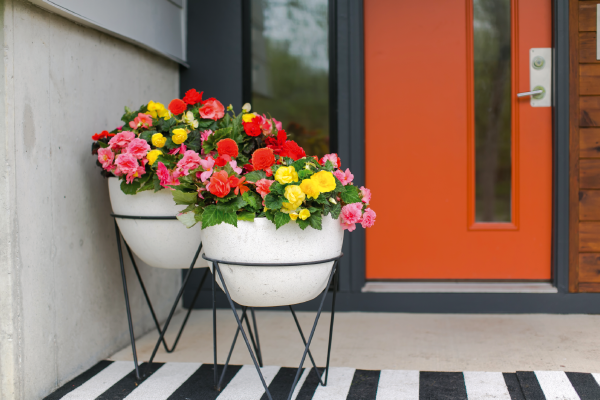

Nonstop®
The Industry Leader in Tuberous Begonias
- Early lateral branching for premium quality production
- Uniform in vigor, habit and flowering
- Large, fully double flowers up to 4” / 10 cm
- A full color range including bicolors
Technical Guide: Click here
All information in our technical guide is based on our own trials and would therefore be as guideline only. Detailed cultivation aspects vary depending on climate, location, time of year and environmental conditions. Benary expressly disclaims any responsibility for the content of such data/information and makes no representation or warranty for the cultivation of any products listed. It is recommended that growers conduct a trial of products under their own conditions.
- Crop Time
- Spring: 15 - 18 weeks
- Height ∅
- 10 ″ / 25 cm
- Width ∅
- 9 ″ / 23 cm
- Exposure
- Partial shade - Shade
- Seed Form
- Pelleted Seed
- Best Uses
- Bedding, Landscape, Pot Plant
Culture guide
Usage
Annual, bedding, patio containers and landscape, hanging basket and window boxes, pot plants
Sow time
November for flowering pots from April onwards, December-January for flowering bedding plants from May onwards
Sowing method
1-2 seeds per plug
Germination
Germination will occur in 7-14 days at 75-78 °F (23-25 °C). Sow seed on a fine media with good water holding capacity and good drainage. Consistent moisture levels are important to uniform germination. Humidity levels above 95 % and a media pH between 5.5 and 6.5 are important. Do not cover seed as light is required to germinate. Supplemental 24-hour assimilation light provided at this stage will increase germination, reduce crop time and improve plug quality.
Growing on
Transplant plugs into finished containers with a well drained media, and pH of 5.5 to 6.5. Maintain day length in excess of 14 hours. Continued supplemental lighting will improve plant quality and shorten crop time. Growing temperatures between 68-72 °F (18-22 °C) optimize growth and flowering. Fertilize at 150-250 ppm nitrogen in a well-balanced formula.
Media
Plug Culture: Maintain media pH of 5.5-6.5 and EC: 0.5-0.75. Begonia are sensitive to high salt levels. Use a well-drained, growing substrate; pH 5.5-5.8; EC 1.25-1.5
Growing on: Use a well-drained, growing substrate; pH 5.5-5.8; EC 1.0-1.5
Temperature
Maintain temperatures of 70-74 °F (21-23 °C).
Fertilization
Plug Culture: Begin fertilizing early, once germination is complete, approximately day 14. Lower rates of feeding at 50 ppm 2-3 times per week will help to size up the seedlings. Under higher light conditions use a 17-5-17 fertilizer and under lower light a 14-4-14. Alternate between a calcium based fertilizer (14-4-14 or 1-5-15) and an ammonium based fertilizer (17-5-17) at 50-100 ppm nitrogen every 2-3 waterings. Fertilizer applications can be gradually increased in the later stages of bulking where a constant feeding at 100 ppm is used. Under high light and long days an ammonium based fertilizer (20-10-20) at 50-100 ppm can also be used.
Growing on: Alternate between calcium based fertilizer 14-4-14 and an ammonium fertilizer 17-5-17 at 100-150 ppm. Keep the media EC at keep the plants more compact. Under higher light and warmer temperatures a fertilizer with additional ammonium can be used.
Stage I Starts with the radicle breaking through the testa. The roots are touching the medium. Ends with fully developed cotyledons.
Stage II Starts from fully developed cotyledons. Ends with the fully developed true leaf or true leaf pair.
Stage III Starts from the fully developed true leaf or true leaf pair and ends with 80% of the young plants being marketable.
Stage IV All young plants are ready for sale and in the process of being hardened off. This stage lasts about 7 days.
The cultural recommendations are based on results from trials conducted under Central European conditions. Different conditions in other parts of the world may lead to deviations in results achieved.














